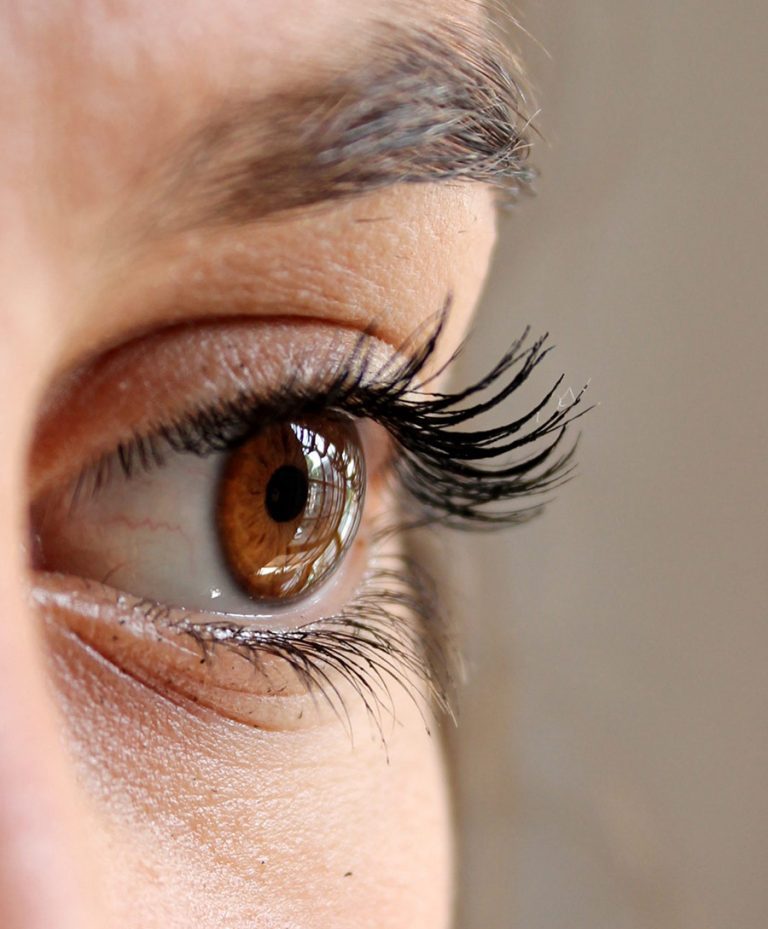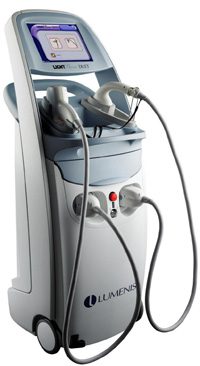Hair Removal Methods Compared
Home / About Electrolysis / Electrolysis / Hair Removal Methods Compared
We break the methods down for you
Removal of body hair for cultural, medical or military reasons has been practised since before the time of the Egyptians. Methods of removing hair can be divided into those that remove the hair above the surface of the skin – Depilation – and those that remove the entire hair – Epilation.
Epilation methods are further broken down into temporary, long-term reduction and permanent methods.
Depilation Methods

Shaving
Copper razors first appeared around 3,000 BC. Alexander the Great promoted shaving within his armies to avoid beard grabbing in combat. The safety razor came on the market in 1880 and the disposable bladed safety razor we know today was patented by King Camp Gillette in 1904. In 1970 Wilkinson introduced the multi-blade plastic cartridge razors that are now ubiquitous. At this point razors for men and women began to vary in looks and price but the mechanism remained identical.
Advantages
- Very fast and inexpensive.
- Requires little or no skill and requires no assistance. Cuts and other injuries have become rare since the invention of the safety razor.
Disadvantages
- Hair begins to appear above the surface of the skin within hours to days.
- Must be repeated daily to weekly to be effective.
- While multi-blade razors may have a smoother cutting action, the claim that they lift the hair from the follicle before cutting and thus produce longer-lasting results was proven false in an American lawsuit.
Side-effects
- A chance of shaving nicks becoming infected.
- Some people are particularly sensitive to “shaving rash” where the abrasive action of scraping at the upper layer of skin triggers an allergic reaction.
Depilatory Creams and Powders
The active ingredient in these compounds is calcium thioglycolate or potasium thioglycolate both of which attack the keratin strands within the hair to weaken it. The cream is coated on the skin and left for a period of a few minutes. The cream, now containing freed hair strands is scraped off and the skin rinsed to remove cream residue. More hair will likely come away while towelling the skin. Regrowth will start to appear above the skin surface within 2-3 days.
Advantages
- Lasts longer than shaving (1-2 weeks) as the hair is removed just below the surface of the skin leaving a slightly tapered end below the follicle opening.
- Requires no skill and requires no assistance.
- Can be done as part of a bathing routine.
Disadvantages
- These creams also attack and irritate the skin since the skin also contains keratin.
- The ideal length of time for the cream to be left on the skin will vary from person to person through variations in skin sensitivity and hair thickness.
- The creams have a strong and distinctive smell.
- Cream can stain clothing or towels if accidental contact is made.
Side-effects
- Mistiming removal of the cream can result in painful rashes from cream being left in contact with the skin beyond the advised removal time.

Epilation Methods - Temporary

Tweezing
Involves mechanically grabbing the individual hairs and pulling them out. Roman baths were known to employ people solely to pluck hair from client’s bodies. Tweezing is the most basic method that removes the entire hair from the follicle. Hair will not appear on the surface of the skin for 2-4 weeks.
Advantages
- Tweezing removes individual hairs and is extremely accurate when selectively removing individual hairs is important such as with eyebrow sculpting.
Disadvantages
- It is very slow and unsuitable for large areas of unwanted hair.
- Some areas may require professional assistance where extreme accuracy and shaping experience is needed.
- Some people find tweezing very painful.
Side-effects
- Not to be used on nose hairs.
- The potential for infection in this body area is high.
- Can cause ingrown hairs.
Waxing
Large areas of the skin can have hair removed through waxing. There are two methods of waxing: traditional hard wax and the more common soft wax. With hard wax, the warm liquid wax is spread over the skin and allowed to harden to a solid. It is then briskly pulled away with the fingers. Hard wax does not stick to skin, only to hair, so it can be used on people with sensitive skin. Hard wax also grabs more firmly and is more likely to be successful at removing the hairs.
Soft wax, or strip wax, is spread over the skin, usually with a spatula, and a cloth or paper strip is placed over the wax to reinforce it. Soft wax, as the name implies, does not have to harden to a solid to do its work so treatment is much faster than hard wax. Once the liquid wax sets, the strip is pulled away taking the wax and hair with it. Hair removed via either method will not appear to regrow for 2-8 weeks.
Advantages
- Inexpensive for temporarily removing large areas of hair.
- Most areas of the body do not need professional assistance.
- By far the fastest method for removing large areas of hair.
Disadvantages
- Can be messy.
- Removal consistency is difficult to get right.
Side-effects
- Hygiene principles need to be applied even in home use to avoid skin infections.
- Skin burns can occur if wax is overheated.

Rotary Epilator
A motorised device that looks like an electric razor. Instead of an active head made up of vibrating or rotating blades, rotary epilators have a row of rotating tweezers to grabs multiple hairs and pull them out.
Advantages
- Allows body areas normally treated by waxing such as arms and legs to be tweezed at home.
- Can be effective for 1-3 weeks before regrowth appears.
Disadvantages
- Skin must be pulled tight to avoid pinching.
- Difficult to use on fine hair. Hair must be grown to a minimum length for the epilator to grab them.
- It can be as painful and assaulting to the skin as it sounds.
Side-effects
- The epilator must be thoroughly cleaned after each use otherwise folliculitis and other infections may result.
Threading
Similar to tweezing but here rows of hairs are removed together by rolling a doubled cotton thread over the unwanted hair. This method originated in India and has been in use for thousands of years in the East. It is as accurate as tweezing and slightly faster.
Advantages
- Removing hairs in a row makes this method faster yet even more accurate than tweezing for shaping eyebrows.
- Inexpensive.
- Many people find it less painful than tweezing.
Disadvantages
- Requires a practitioner and these can be difficult to find outside of large cities.
Side-effects
- Redness or puffiness of the treated skin.
- Potential for bacterial infections such as folliculitis unless strict hygiene practices are followed.
Prescription Drugs
Eflornithine hydrochloride is the active ingredient in drugs prescribed for excessive hair growth. These drugs stall the hair growth cycle in the resting phase. The drug takes 2 months to take effect and once treatment stops the hair will grow back. Eflornithine hydrochloride has been shown in clinical trials to be effective in 58% of patients who took it.
Advantages
- Women for whom the drug is effective will be able to halt the growth of facial hair.
Disadvantages
- Cannot be used by men because of its effect on hormones.
- Should not be used on parts of the body other than the face.
Side-effects
- Will produce feminising effects if used by men or prepubescent girls.
- Side-effects have not been checked in pregnant women.
- Can inflame the effect of acne or skin punctures.

Epilation - Longterm Reduction

Laser
Laser hair removal was first introduced in 1997. It relies on the principle that laser energy can pass through light coloured material with little effect but is absorbed and converted to heat when passing through dark material. In the case of hair removal, the laser is relying on the high concentration of melanin in hair compared to skin for its selective action. For this reason laser is only effective on black or brown hair combined with light coloured skin.
Laser is applied using a wand held against the skin. Areas of several square centimetres are treated with each firing of the laser. Used skilfully, the client should have little discomfort other than a feeling much like sunburn.
Not all lasers exhibit exactly the same characteristics as they operate at different frequencies and power levels. Ruby lasers are the only lasers to operate in the visible spectrum but their ability to treat only the palest skin has seen them largely replaced by diode lasers. Common types of lasers in use today are Alexandrite, Diode, YAG and IPL (not actually a laser). All these lasers operate at near-infrared frequencies. Independent data on the effectiveness of the different lasers is difficult to find. Alexandrite lasers are 69% effective at inhibiting hair growth over 6 months with a 9.5% report of side-effects while diode lasers are 72% effective but with a 29% incidence of side-effects. IPL has a 6 month effective rate of 67% and 15.3% incidence of side-effects.
It is believed the reason laser is able to achieve a clear reduction in hair growth but not permanent destruction of the hair is because it is only able to target the symptom (hair) and not the cause (bulb and bulge). Although the bulb and bulge are transparent to laser light, the bulb will be damaged extensively due to its attachment to the hair shaft but within 6-12 months it will heal and resume hair production.
Advantages
- Up to 60 times faster than treatments targeting individual hairs.
- Effective for long lasting (12 months) hair reduction in suitable clients.
- Useful for large areas such as backs and legs.
Disadvantages
- Good results are heavily dependent on clients having high contrast between dark hair and light skin.
- Rarely used for facial hair due to the risk of side effects.
- Long-term safety data on laser’s effect on the skin structure have not been clinically established.
- Laser is ineffective on vellus hair (light down or peach fuzz).
Side-effects
- Minor side-effects are redness and swelling which will heal in a matter of days.
- A medium term side-effect is a change in skin pigmentation that can last 6 months or more.
- Permanent side-effects from inappropriate use can include burning and scarring. Some countries only allow doctors to use laser equipment because permanent side-effects are possible. This is not the case in Australia.
- Laser is considered to be dangerous when attempted on dark or olive skin complexions due to the amount of melanin in these skin-types. This melanin has the potential to convert the laser energy to heat much faster than fair skin and retain pigmentation marks or scars permanently.
- Laser is not recommended for women who have moles, are pregnant or suffer from PCOS or hirsutism. Damage to vellus hair follicles on a woman in a state of hormone imbalance from any of these conditions can tip that hair into conversion to terminal hair as the bulb recovers. The result is actually an increase in problem hair over time.
Intense Pulsed light
Commonly known as IPL, it is often categorised with laser as it uses the same principle for its effect and the machines look identical. IPL differs from laser in that laser utilises a monochrome (single frequency or pure colour) coherent (straight beam of photons) light source. IPL uses a conventional light source covering a spectrum of frequencies that are filtered to those best for passing harmlessly through skin. As the light is scattered rather than coherent it is believed to be less damaging to the skin and safer for darker skin types.
IPL is applied using a wand device in the same way as laser and produces the same “sunburn” effect in the client.
Advantages
- Claimed to be less damaging to the skin structure and safer on darker skin but no clinical data exists yet to support this view.
- Up to 60 times faster than treatments targeting individual hairs.
- Effective for long lasting (12 months) hair reduction in suitable clients.
- Useful for large areas such as backs and legs.
Disadvantages
- Good results are heavily dependent on clients having high contrast between dark hair and light skin.
- Rarely used for facial hair due to the risk of side-effects.
- Long-term safety data on IPL’s effect on the skin structure have not been clinically established.
- IPL is ineffective on vellus hair (light down or peach fuzz).
Side-effects
- Minor side-effects are redness and swelling which will heal in a matter of days.
- A medium-term side-effect is a change in skin pigmentation that can last 6 months or more.
- Permanent side-effects from inappropriate use can include burning and scarring. Some countries only allow doctors to use laser or IPL equipment because permanent side-effects are possible. This is not the case in Australia.
- IPL is considered to be dangerous when attempted on dark or olive skin complexions due to the amount of melanin in these skin-types. This melanin has the potential to convert the IPL energy to heat much faster than fair skin and retain pigmentation marks or scars permanently.
- IPL is not recommended for women who have moles, are pregnant or suffer from PCOS or hirsutism. Damage to vellus hair follicles on a woman in a state of hormone imbalance from any of these conditions can tip that hair into conversion to terminal hair as the bulb recovers. The result is actually an increase in problem hair over time.


Thermolysis
Thermolysis was developed by Dr Bordier of Paris in 1923 as an adjunct to the galvanic hair removal method. Thermolysis works on the same principle as a microwave oven. High frequency AC current is passed through a probe inserted into the hair follicle alongside the hair. This radio frequency energy converts to heat within the liquid found in the follicle, which then electrocoagulates (cooks) surrounding tissue.
Thermolysis is much faster and simpler to apply than the original galvanic method of hair removal requiring the probe to be inserted into the follicle only momentarily to extract the hair. Thermolysis was originally introduced as a way of removing vellus hair (light down or peach fuzz) while clients undertaking galvanic electrology on terminal hair (dark thick hair) were waiting for the slower galvanic method to do its work. However, because of its speed advantage, thermolysis rapidly gained popularity for treating all types of hair.
The limitations of thermolysis were well understood by its inventor and early practitioners which is why they limited its use. At a time when galvanic electrology was the norm, clients expected electrology to be completely permanent and while thermolysis could permanently kill hair in the anegen (growth) stage, this only accounts, at best, for 10% to 60% of hairs depending on body area. The rest will eventually grow back. Such a success rate was acceptable for thinning out peach fuzz but not for removing dark hairs.
Advantages
- The fastest method of hair removal targeting individual hairs.
- At least as effective as laser at long-term (6 to 12 months) hair reduction and may permanently kill some hair.
- Suitable for all hair and skin colours.
- Can be used on facial hair.
- Only localised and brief pain/discomfort at the treatment site.
Disadvantages
- Can be as expensive as laser by the time similar results are achieved.
- Results can vary greatly depending on the skill of the operator. If the operator is tempted to reduce power in order to improve client comfort or decrease dwell time to increase the number of hairs treated the result will be more vigorous regrowth since the hair bulb is left intact.
Side-effects
- If clinic sanitary standards are lax the method can potentially spread infection.
- A critical issue with the thermolysis technique is the density factor. When used to simply thin out areas of fine hair this is not a problem but attempting to completely clear an area of dense hair with this technique will cause overlap in areas of skin affected by electrocoagulation. Overlap 3 or more affected areas and permanent scaring will occur presenting as irregular areas of marbling or pitting of the skin.
- An operator may be tempted to increase the power or length of time in each follicle in order to produce longer-lasting results. As well as increasing the risk of overlap, this has the effect of unevenly heating the follicle and twisting or even inverting the hair shaft. If the hair bulb dies this is of little consequence but if it does not the result is an ingrown hair.
Blend
The goal of blend electrology is to combine the advantages of both thermolysis and galvanic into one potent hair removal method. Galvanic electrology creates its effect by converting moisture in the follicle into caustic lye to break down the walls and structure of the hair follicle while thermolysis relies on heating this same moisture to the point of electrocoagulation. Blend proponents believe that heated lye is an order of magnitude more caustic than when at body temperature so this method should combine the speed of thermolysis with the effectiveness and safety of galvanic electrology. Blend operators believe they are applying galvanic electrology with a power and speed boost from thermolysis.
Recently, insulated probes have become popular with blend operators as they concentrate power at the base of the hair and bypass the ring of nerves around the middle of the follicle to lower discomfort for the client. Unfortunately this limits the galvanic effect which relies on surface area for producing lye. With great prescience, the 1979 study, Electrolysis Regrowth by McKinstry, stumbled upon the importance of the bulge without even knowing it existed when they noted that if blend electrologists also ensured the destruction of the top third of the follicle then regrowth was greatly reduced. Again, the use of insulated probes leaves the top third of the follicle untreated reducing the long-term effectiveness of the treatment.
Advantages
- Much faster than galvanic electrology.
- Danger of thermolysis density scaring is greatly reduced.
- Suitable for all hair and skin colours.
- Can be used on facial hair.
- Can be used on moles and tattoos.
- Pain/discomfort at the treatment site is only slightly higher than thermolysis.
- Limited data indicates blend is more effective at both long-term hair reduction and permanent destruction of some hair than thermolysis.
Disadvantages
- Can be expensive and time-consuming.
- Results can vary greatly depending on the skill and patience of the operator. Without careful calibration, blend electrology is likely to have the thermolysis and galvanic effects working against, rather than complementing, each other as both methods are competing for the same resource – moisture within the follicle. If the proportion of power devoted to thermolysis is set too high there will be no moisture for the galvanic effect to work with and the client will be effectively receiving thermolysis alone – albeit very slowly.
- Contrary to the belief in the potency of heated lye, the caustic effect of lye is a chemical reaction relying on a fixed ratio between the quantity of lye and the quantity of cell material it can react with. Heat may speed the reaction but will not change this ratio nor can it increase the volume of lye formed by the electrolytic reaction which is a function of time verses current. Again, skill and patience in the operator is needed to ensure time is given for the galvanic effect to take place.
Side-effects
- If clinic sanitary standards are lax the method can potentially spread infection.
- While the chances of marbling or pitting of the skin are greatly reduced in blend, they can still occur if power settings are too high and hairs are treated too close together.

Epilation Methods - Permanent

Galvanic Electrology
This method was invented by ophthalmologist Doctor Charles Michel in 1875 for the delicate procedure of removing ingrown eyelashes. It takes its name from the galvanic cell (what we know as a battery) that powered the early devices. Despite the emphasis on the term “electro”, galvanic electrology is a chemical process. A fine metal probe is inserted into the hair follicle alongside the hair and a low-voltage DC current is passed through it. The electric circuit is completed by passing the current through the body and back to the machine via a conductive return pad strapped to a limb or held in the hand. The negative charge at the probe head converts the moisture in the follicle into caustic lye (sodium hydroxide). The lye breaks down the lining of the follicle along with the hair’s reproductive components – the bulb and the bulge.
The advantage of this chemical process is that lye production is very predictable and a simple time verses current formula can determine the quantity of lye in the follicle. The chemical breakdown of the follicle even continues after the hair is removed with some operators removing the hair itself long before the probe is removed. One of the residue compounds produced by the lye reaction in the follicle is hydrogen peroxide. At these concentrations hydrogen peroxide keeps the follicle sterile and aids in triggering the healing process.
At the return pad there is also an electro-chemical reaction taking place. Here hydrochloric acid is forming on the surface of the skin as the positive charge leaves the body. The large surface area of the return pad ensures the concentration of this acid is kept to a minimum. The skin can be coated with a sodium-based gel to counteract its effect.
With the probe needing to be kept in the follicle for 3 minutes or more it can take a long time to treat an area of skin with the galvanic method and just one probe. Designers rapidly caught on to the idea of multi-probe machines starting in 1916 with 4, 8 then 16 probes. An experienced operator may use two 16-probe machines at once on a client and remove hairs continuously and almost as fast as a blend operator.
While the galvanic method may permanently kill every hair it is used on this cannot account for follicles currently in the resting state with no hair shaft growing in them. These dormant follicles will appear identical to treated follicles until the growth phase recommences. This is why the galvanic method will still require several passes on an area of skin over a period of several months in order to pick up this latent growth.
Scientists and operators alike have puzzled for nearly a century as to why properly administered galvanic electrology appears to be effective in destroying hair follicles outside the growth phase when other methods do not, even when it can be verified that the hair bulb has been eliminated. Recent experiments by Korean dermatologists have shown that the bulge, located at a relatively shallow depth in the follicle, is responsible for producing the stem cells needed to regrow the bulb at the start of each growth cycle. In these experiments live hair follicles were removed in the usual method for hair transplantation but, in this case, the bottom third of the follicle was cut off completely removing the hair bulb and all growth structures. The follicles were then implanted back into the skin. After 100 days almost half the transplanted follicles had regrown hair.
These experiments proved that the hair bulb can be completely regrown from stem cells in the bulge and from this it is surmised that in galvanic electrology the distribution of lye over the full depth of the follicle as well as its depth of penetration into surrounding tissue is the reason it is able to attack both the bulb and the bulge and permanently destroy the hair.
Advantages
- Suitable for all hair and skin colours.
- Can be used on facial hair.
- Can be used on moles and tattoos.
- Although a slow procedure, it is the fastest way of achieving permanent hair removal.
- Some operators are prepared to guarantee no regrowth in writing.
- The hydrogen peroxide residue left in the follicle keeps it sterile and promotes healing.
- Although an extensive galvanic electrology session can leave skin looking sore for up to a few days after treatment, this skin aggravation appears to stimulate collagen growth leaving the skin more supple over time.
Disadvantages
- It is expensive upfront but if permanent hair removal is your goal it will add up to unless compared to repetitive laser treatments.
- It is time-consuming.
- Galvanic electrology can feel anything from comfortable to various levels of discomfort depending on the body area being treated.
- For extensive treatments of 3 hrs or more the skin can appear quite irritated immediately after treatment. This will dissipate within a couple of hours but red marks may persist on the follicles themselves for up to several days after treatment.
Side-effects
- People with heart conditions or who have embedded electronics such as pacemakers or cochlear implants should avoid galvanic electrology unless approval is obtained from a physician.
- While galvanic electrology is theoretically safe during pregnancy, most electrologists will choose and recommend to delay the treatment.
Ineffective Treatments
Finally there are hair removal methods that produce such poor results as to be categorised as ineffective, risk damaging the skin or are a danger to life.
Transdermal electrolysis
This method relies on prospective clients having a vague notion of how electrology works to justify its claims. A conductive gel is spread over the treatment area and electricity is passed through a cotton swab touching the gel. Electricity supposedly travels down the hair into the follicle and permanently damages the hair bulb. This simply defies basic physics as hair is a poor electrical conductor and any charge is going straight from the swab and into the gel.
Similar to transdermal electrolysis, this variation uses an adhesive patch rather than a cotton swab to supposedly pass electricity from the patch, through the hair and into the gel. This method still cannot defy physics.
Photoepilators
These are home-use versions of IPL hair removers. The greatly reduced power of these devices compared to their commercial counterparts means they are about as effective as waxing but much slower and more expensive.
Microwave
These devices are extremely dangerous. They use a wand similar to laser but emit microwaves to heat the hair using the same principle as thermolysis. Makers claim that, unlike laser, microwave can be used on all hair colours. The glaring problem with these devices is their propensity to “cook” all of the skin they are pointed at whereas thermolysis goes to great lengths to target individual follicles. The microwave method is relying on the skin being extremely dry while the follicles are full of moisture. Unfortunately this is not the case.
Dietary supplements
While there are a number of medications capable of retarding hair growth, none of them are found in nature and their use is heavily regulated. Any over-the-counter substance claiming to reduce or stop hair growth is making false claims.
X-rays
Within a couple of years of the discovery of X-rays in 1895, researchers were keen to try them as a cure for all sorts of diseases and abnormalities in the same way as researchers in recent times have attempted to cure all sorts of conditions with lasers. It was not long before X-ray treatments were tried for hair removal. Patients were exposed to 20 hours or more of X-rays to make their hair fall out and not regrow. This method was shown to be permanent. Unfortunately, the deadly cancers acquired by nearly all the patients involved also proved to be permanent.

